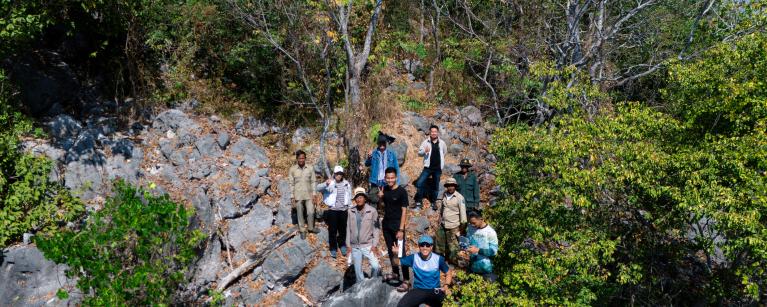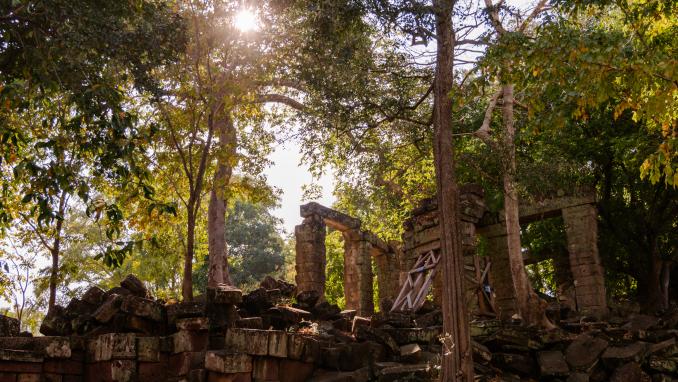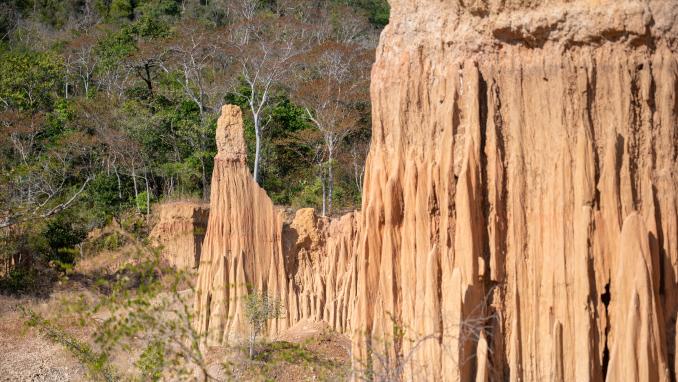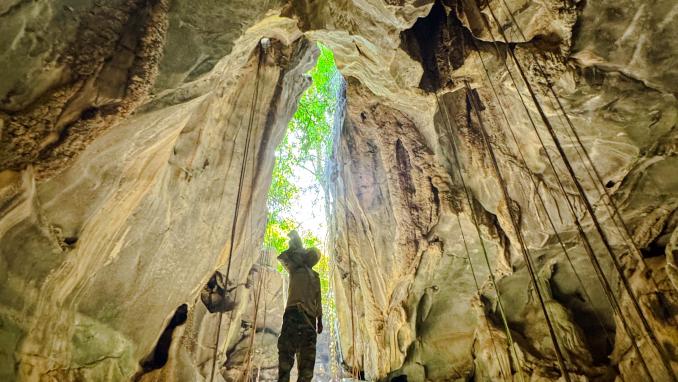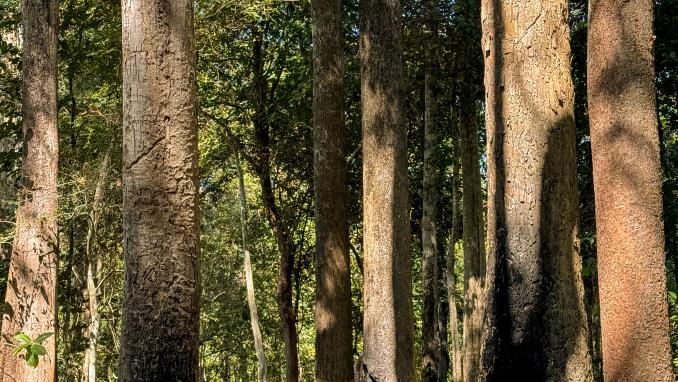Many Community Forestry and Community Protected Areas possess immense potential to transform under Oxfam’s Climate Resilient for All project into Community-based Ecotourism (CBET) ventures. This shift offers communities opportunities to generate income by hosting local and international tourists and reinvesting earnings into forest conservation for a sustainable future.
Despite CBET’s promise, challenges hinder its development. Insufficient promotion, remote locations, and limited infrastructure poses significant obstacles in attracting visitors. While poor internet access complicates outreach efforts, it appeals to travelers seeking solitude and escape from the digital world.
To assist communities transitioning to CBET models, Oxfam collaborated with sustainable tour agencies such as Solo Landscapes, Khmer Travel and Tour, and Malay Journey. These agencies offer expertise in resource management, CBET guidance, and strategies to boost tourism.
To further this effort, Oxfam conducted a three-day field visit to Phnom Preah Community Protected Area in Banteay Meanchey province and the Sang Rukhavorn Community Protected Area and Phnom Dangrek Samrek Preysros Community Forestry in Oddar Meanchey province . The visit assessed these sites’ potential for CBET initiatives, which could generate revenue for local projects.
The visit yielded several key recommendations to strengthen CBET efforts. Developing detailed community maps with clearly marked start and end points to guide visitors on where to begin, explore, and conclude their journeys. Another suggestion was to install signposts within the community and along main roads to attract visitors and improve visibility. By showcasing the distinctive features of each community—such as local cuisine, handmade products, and unique wildlife—visitors could select destinations matching their interests. Connecting these various attractions also became a priority, as it would offer visitors a richer, more diverse experience. Collaborating with neighboring communities was deemed essential for identifying and emphasizing unique local attractions.
The trip emphasized the importance of storytelling. Providing brief histories and images of each site could offer visitors a deeper understanding of the area. Communities were encouraged to clearly define roles within their communities, covering tasks like cooking, customer service, and guiding, to ensure smooth operation.
Offering diverse tour packages was another critical recommendation, giving visitors varied experience. Engaging the community’s youth became a focal point, as their involvement in tourism promotion through platforms like Facebook, Telegram, Instagram, TikTok, and YouTube could significantly broaden outreach.
Maintaining cleanliness and upkeep was highlighted as crucial for attracting and retaining visitors. To support these initiatives, Oxfam and its partners proposed capacity-building sessions focusing on photography, videography techniques, and ethics. These skills empower communities to produce compelling communications and marketing materials. Additionally, study tours for communities to learn from successful CBET initiatives in Cambodia were recommended to inspire and guide further development.
Through these initiatives, communities can harness eco-tourism’s benefits while safeguarding their resources for future generations. Oxfam remains committed to working with these sustainable tour agencies while seeking new partnerships with local agencies to help communities gain recognition as CBET destinations.
Through these efforts, Oxfam envisions a future where communities thrive as independent, self-sufficient entities, sustaining themselves through income generated by CBET initiatives.
